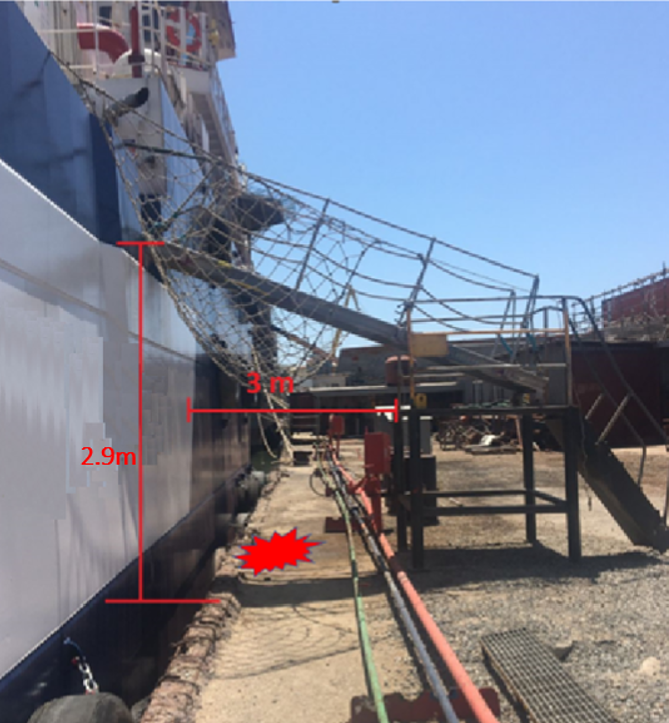- IMCA reports of an injury when a gangway collapsed.
- Cause: The vessel gangway was moved partially instead of fully and properly. This happened because scaffolding was installed on board the vessel, resulting in a lack of space to store the gangway
IMCA, in its Safety Events, reports of an injury when a gangway collapsed.
What happened
A person was badly injured when a gangway collapsed as he was using it. The incident occurred when the injured person requested permission to leave Vessel 2, which was moored outside of and alongside Vessel 1, which was alongside in a shipyard. The injured person was unaware that Vessel 1 was undergoing engine tests, and the gangway was not in use. However, the gangway had not been removed completely, due to scaffolding structure being in the way. There was no gangway watch nor were there any signs and barriers in place. As the injured person started to walk down the gangway, it collapsed causing the person to fall and break both heels. Medical evacuation was arranged and fracture of both heels was confirmed afterward.

What went wrong
- The vessel gangway was moved partially instead of fully and properly. This happened because scaffolding was installed on board the vessel, resulting in a lack of space to store the gangway;
- The partial removal of the gangway, though it was known to be incorrect, was left unchallenged by everyone involved;
- The removal of the gangways on both vessels (due to engine tests) had been announced and was recorded in the bridge logbooks, but the injured person was still granted permission to leave the vessel;
- There were no rigid barriers or safety signs at the access point (an open door) to dissuade or prevent persons from using the gangway;
- There was no gangway watch person present;
- There was no lighting over the gangway area (the event occurred in the hours of darkness).
Lessons to learn
- More “joined up thinking” needed – better communication of, and understanding of, what is going on;
- Ensure appropriate supervision of crew at all times;
- Ensure that there is a gangway watch – as mandated in ISPS – at all times, and ensure that access to and from the vessel is properly lit;
- Ensure barriers and signage indicating a hazard or dangerous area, are fit for purpose and cannot be got round in any way;
- Stop and think! Take the time to think things through.
Did you subscribe to our daily Newsletter?
It’s Free! Click here to Subscribe!
Source: IMCA
















